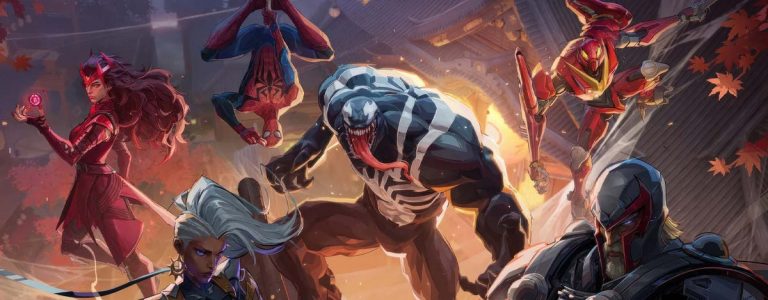Marvel’s Spider-Man 2 released October 20 with fanfare worthy of the vibrant New York City where it’s set, becoming the fastest-selling PlayStation exclusive and igniting pertinent conversations about its protagonists’ asses. Below the surface, the direct sequel to developer Insomniac Games’ 2018 game is even more impressive, with missable, but immersive, environmental design and, as Kotaku senior writer Ethan Gach puts it in his review, an “unexpectedly impactful” approach to the love and friendship central to its plot. Spider-Man 2’s release week interviews can provide you a more detailed look under the hood, so I rounded up some of them.
Order Marvel’s Spider-Man 2: Amazon | Best Buy | GameStop

Senior creative director Bryan Intihar recently spoke to PlayStation mostly about Spider-Man 2’s accessibility features and tutorial, but also noted that the game’s take on friendship meant a lot to him and the Marvel franchise at large.
“It’s like the least Spider-Man thing,” he said, “but… the thing I always said early on was like, ‘Hey, we want to deliver the fantasy of being these heroes, whether it’s the web-swinging, the suits, the combat. We wanted to live the superhero fantasy, but I think the thing that can really help our game stand out is how we show their lives outside the mask. If we show their journeys, their needs, their wants, their problems? How do we show them outside the mask?’”
Narrative director Ben Arfmann and advanced writer Brittney Morris shared similar behind-the-scenes observations with Gizmodo.“Whenever we tell a Spider-Man story, we always come back to, ‘The man underneath the mask is just as, if not more important, than the mask,’” Arfmann said.
This ethos was particularly important in constructing gooey alien symbiote Venom, who drives much of Spider-Man 2’s blockbuster drama. “I think we collectively understood that if we have a Venom game, we need to be able to play as him,” Morris said. “It’d be such a missed opportunity otherwise. We’re game developers, but we’re also fans, and so we knew what we wanted, and that players would probably agree that’d be the right move.”
Making that happen required attentive design. “When we’re doing animations, things have to look snappy,” senior art director Jacinda Chew told Marvel’s official news site. “The tentacles have to look like they’re almost sentient and they have a purpose. But then, when they snap back, there’s a little liquidy, kind of semi-liquid feel to them as well. So, a huge component of nailing Venom was not just the visuals, but also how we animated him.”
Keep reading for more details about the art and story behind Spider-Man 2.
Senior Creative Director Bryan Intihar, on the game’s opening section:
We knew very early on [Spider-Man 2] was going to be on the PS5 console. We knew enough about the console, its capabilities and how we wanted to push it. And we obviously knew it was going to be two Spider-Men. So, you say: new console. Big sequel. Two heroes. What is deserving of an opening for that? I think Sandman was our thing.
We worked on that mission for a long time. A long, long, long time. Here’s the thing: it’s not just like, obviously, he’s a big character in the opening. But technically it’s a challenge, whether it’s moving in and out of buildings and seamlessly switching heroes, just the amount of tech and art that goes into making Sandman look good. We wanted to go big. We wanted people to understand right away—and I always joke it’s called Marvel’s Spider-Man 2 for a reason, because there’s two of them—but for us, it was like, how within that first 20, 30 minutes, can we show people that everything is being leveled up.
Director of core technology, Mike Fitzgerald, on ray-tracing and performance:
It has always pained me, whenever I see a screenshot of the first couple of Spider-Man games, or if I see [Ratchet & Clank] with ray tracing turned off. And I always know immediately, when I see that screenshot and it always bums me out. And so it was always an aspiration for this one: wouldn’t it be great if we didn’t have to have that real big compromise in there, if we got back to a pure performance and resolution trade-off. And I don’t think we committed to it until earlier this year, but I think basically, we saw the way performance was trending and we said, ‘you know, it’ll be work, but let’s go for it’. I feel like we got there with the last games, but we always got there, like, a week after launch. Or, right at the deadline, and we’re never quite confident enough. And so this time, it just took a bit of ‘No, we’re gonna do it and we can get to where it needs to be.’
Read More: Spider-Man 2: The Kotaku Review
Design director Josue Benavidez, on gameplay
That’s one of the things we love to do as much as we can—let players control, and actually use the Spider-powers themselves, and figure out interesting ways they can combine things. As much as we can, we’d like to let players have fun. [We] create games that are a toolbox of toys to play with.
Venom actor Tony Todd, on the character:
I think, when people play this game, there’s going to be different sides—of course people are rooting for Spider-Man and Miles, but I think there’s going to be a whole section of people that are saying, ‘Well, what can Venom do, and why do I like him?’ Because he’s just doing it with abandon!
Advanced writer Brittney Morris, on second Spider-Man Miles Morales:
At the beginning of the game, we see [Miles] struggling to figure out what he wants to do with his life. By the end, we had Miles carrying the burden of saving the city, and also carrying Pete when Pete wasn’t strong enough to carry himself at various points.
That’s what’s been so cool about writing a story about two Spider-Men: they’re both strong, and one of them can be strong when the other is not. By the end, Miles is more confident and he’s like, “Yeah, I got this. How much worse can things get after what we just went through?”
Mr. Negative actor Stephen Oyoung, on film and video games
There’s greater freedom of movement with video games. There are less intricate props and sets of course, so it’s all in your imagination, but I really enjoy that process. It’s very intimate, with much smaller crews, but there’s also very little downtime since you’re not waiting for camera or lighting setups. And as far as your performance, what you do in the moment is what they’re going to use. It’s immediate. There are no cutaways, no reverse shots. So when you’re having a conversation, that’s what it is. It’s like real life. After a fashion.
Experience Spider-Man 2‘s own brand of movie magic now, on PS5.
























